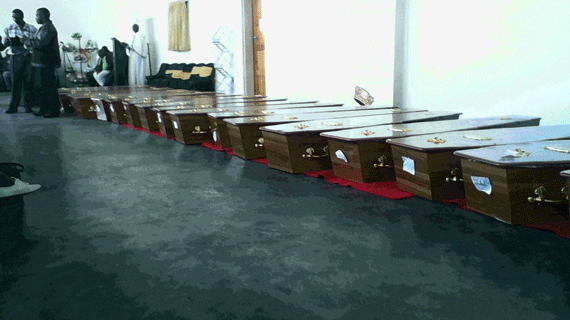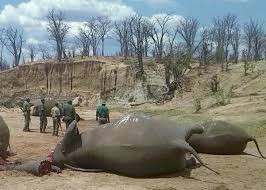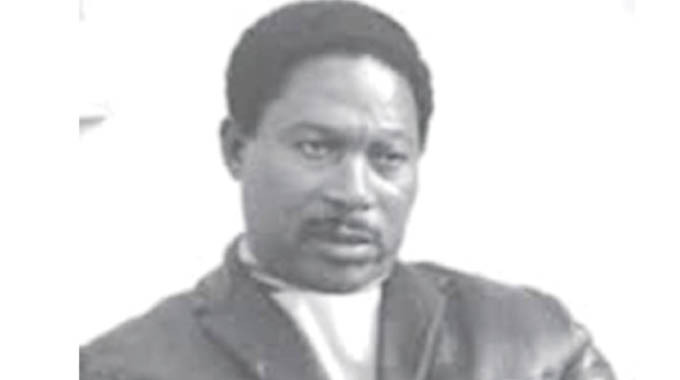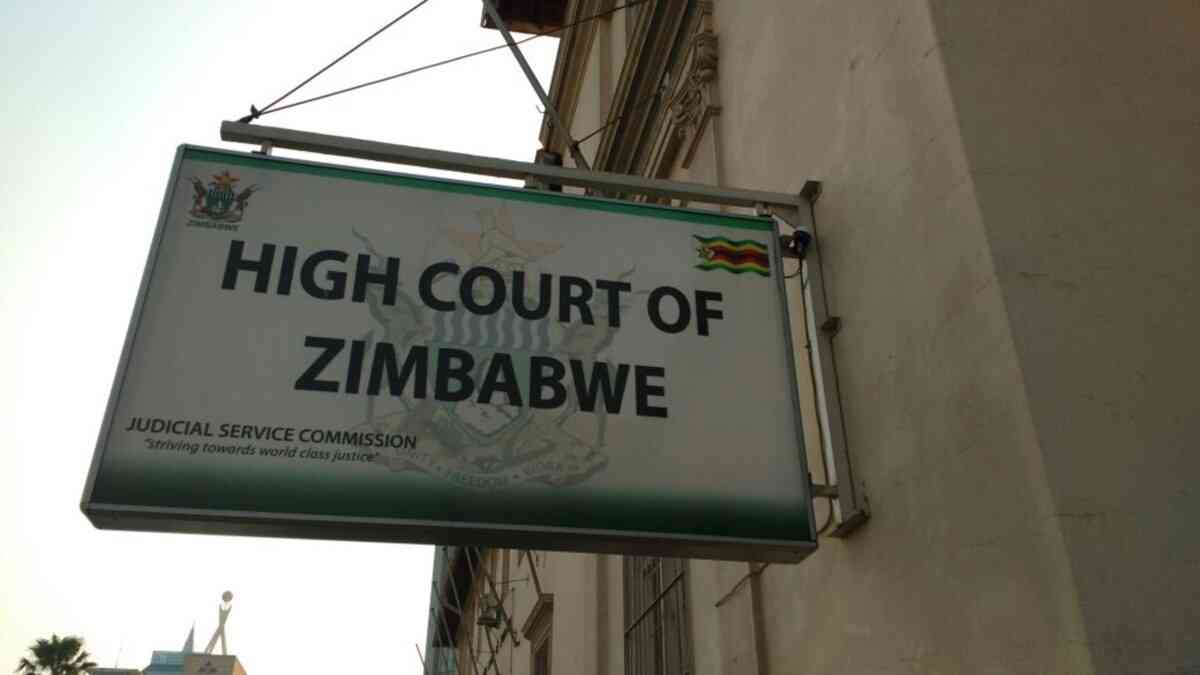
BENONI — After eight days decomposing in a disused South African gold mine, 32-year-old Blessing’s body was so bloated it could barely fit through the tiny tunnel entrance hidden at the foot of a towering mine dump in a town east of Johannesburg, SA.
The corpse of his friend, Shelton, will remain forever in the earth, trapped beneath immovable tonnes of fallen rock down a hole too dangerous for professional rescue teams to enter.
The pair, both illegal migrants from Zimbabwe, had crawled into the partially blocked ventilation shaft on the night of February 10, risking their lives for a few kilogrammes of the seam of gold-bearing rock that was discovered in the 1880s, starting the gold rush that gave birth to Africa’s wealthiest city.
It is a drama played out every night by hundreds of men driven by poverty and desperation to chance their luck in some of the world’s oldest and deepest gold mines armed with little more than a torch, pick-axe and nerves of steel.
In Zulu, they are called zama zama which loosely translates as “those who try to get something from nothing”.
Scores are thought to die every year, although police admit they have no idea of the real toll.
When Blessing and Shelton failed to return home, friends and family raised the alarm in Benoni, a hardscrabble town 40km east of Johannesburg, but got little response from local authorities inured to yet another zama zama tragedy.
The only ones willing to go searching were Blessing’s brother, Peter, and other illegal miners.
- Chamisa under fire over US$120K donation
- Mavhunga puts DeMbare into Chibuku quarterfinals
- Pension funds bet on Cabora Bassa oilfields
- Councils defy govt fire tender directive
Keep Reading
Earlier this month, the ad hoc recovery team found the bodies deep underground, crushed by a rock-fall.
Blessing’s body, wrapped in a red tarpaulin, was hauled out on the end of a tow rope.
As the exhausted miners washed the dust and stench of death from their hands and faces in a stream, Shelton’s sister, Thembelani Mpofu, broke down, lamenting the ignored entreaties to her brother to stay away from the shafts.
“It’s not easy to accept that a person has died. It’s even harder when you can’t see the body,” she said.
“We tried to stop him going inside but there’s nothing you can do. There are no jobs, and you can’t hold him. He’s not a kid.”
Rescue workers took an hour to arrive at the shaft, by which time flies were swarming over Blessing’s covered body.
One look down the hole convinced them of the dangers of going in.
Such incidents are all too common in the gold mines that honeycomb the rock beneath Johannesburg, the richest seam of ore ever discovered and historically one that accounts for more than a third of all the world’s mined bullion.
After more than a century of mining in the area, many of the shafts are defunct, with their owners unable to make a profit by chasing the gold reef ever deeper into the earth — sometimes as far as three or more kilometres underground.
At such depths, safety is expensive, especially given the pressure on the mining companies since the end of apartheid in 1994 to improve South Africa’s shocking accident rates.
The derelict mines are locked and armed guards patrol the main shafts but there is little that can be done with the thousands of smaller ventilation openings that stretch for 140km through suburbs and fields above the reef.
In most cases, a concrete slab is dropped on the hole to prevent access, but those desperate enough simply burrow round the block under cover of darkness and disappear into the earth.
With unemployment at 25% in South Africa, and as much as 80% in countries such as Zimbabwe and Mozambique, there are plenty of men desperate enough to take the risk as foot-soldiers for the criminal networks that will spirit the gold out of the shadows and into the bullion mainstream.
“We keep closing the shaft but we can’t stop them,” said Marvin Hennessey, a director of Benoni Gold Mining (BGM), a quarrying company recycling the vast mine dump that sits on top of the shafts where Shelton and Blessing died.
BGM spends R200 000 ($18 500) a month trying to ward off illegal miners, he says, but this is the second fatal accident in a year at this shaft — and he knows there will be more.
“We’ve got full-time security patrolling but if the police can’t stop them, what chance do we have? It’s a constant battle. We’ve got no control of it. There is no solution.”
In 2012, mining minister Susan Shabangu estimated the damage inflicted on the wider economy at least 5 billion rand, much of it in the form of security and the cost of rehabilitating shafts rendered unsafe by the unregulated digging and blasting of the zama zamas.
Of the five Zimbabweans who dragged out Blessing’s corpse, only one — his 23-year-old nephew Khuland — said the experience had convinced him the risks were too high.
“It’s so dangerous. I’m quitting now. This is my last time,” said Khuland, a truck driver who had been supplementing his day wages with illegal mining for two months. During that time he came across two other accidents, one of them fatal.
As with all the other miners interviewed by Reuters, he declined to give his surname for fear of the police.
Others said the need to feed and clothe wives and children outweighed the risks of “going inside”, often for up to a week, in the quest for ore that is then crushed and panned either above or below ground to extract the tiny flecks of gold.
“It’s tough underground, horrible. We sleep together. We eat together,” Ronaldo, who has been in the business four years, said.
“Sometimes I will spend 12 hours underground; sometimes three, four, five, six days. It just depends.”
He accepts the risks but says he cannot afford to forgo the cash that amounts to as much as 3 000 rand from a good trip, or as little as R100 from a bad one.
“But every time I get out, I say ‘God Bless’,” he added.
Nor are accidents the only things to fear, with rival gangs, often armed, roaming the shafts. Besides the Zimbabweans, Benoni’s crumbling tunnels are worked by groups from Mozambique and the mountain kingdom of Lesotho, the latter with a reputation for capturing rival miners and forcing them at gunpoint to work.
Innocent, a 24-year-old Zimbabwean, said he was lucky to escape alive after an underground run-in last November. He lost his uncle a year ago in an accident but still refuses to quit.
“I’m starving, there’s no work and I have a wife and child to support. I’m not afraid of the police but I am afraid of the tsotsis,” he said, using the South African slang for gangster.
The police say illegal mining is largely devoid of South Africans, who, since apartheid, have access to a meagre social security and a much greater chance than foreigners of gaining formal employment.
The government acknowledges the extent of the problem, with Susan Shabangu, the Mines minister, making two visits last year to illegal mining sites around Johannesburg and setting up a provincial Illegal Mining Forum.
But most of the State’s health and safety energy goes into improving conditions in South Africa’s legal mines, manned predominantly by South Africans due to restrictions on the use of foreign labour.
Despite improvements since the end of white-minority rule two decades ago, more than 100 people die each year in the legitimate mines, although this total includes minerals such as platinum and coal as well as gold.
And in reality the police have little chance of tackling a criminal chain that starts underground and ends, according to officials, in plush offices in Johannesburg’s swanky northern suburbs or even beyond South Africa’s borders.
Hundreds are arrested each year for illegal mining, an offence that carries up to two years in prison, but police said the vast majority were illegal foreigners who are simply processed, put on a bus and dumped over the border.
“Then they come back again,” police spokesman Paul Ramoloko said.
The main aim of the arrests is to use the zama zamas to build up a picture that might lead ultimately to the illegal bullion masterminds.
“We’ve arrested a few of the middle-men, but we haven’t really got into the big-shots,” Ramoloko said.
This month, also in Benoni, emergency services were alerted to possibly as many as 200 men trapped underground.
However, when rescuers opened the blocked shaft with lifting gear they had to beg those inside to come out.
Twenty-two eventually did, but an unknown number refused, preferring to stick it out in the darkness where the law dares not tread. At one point in the negotiations, they even asked police officers to toss them cigarettes. — Reuters










